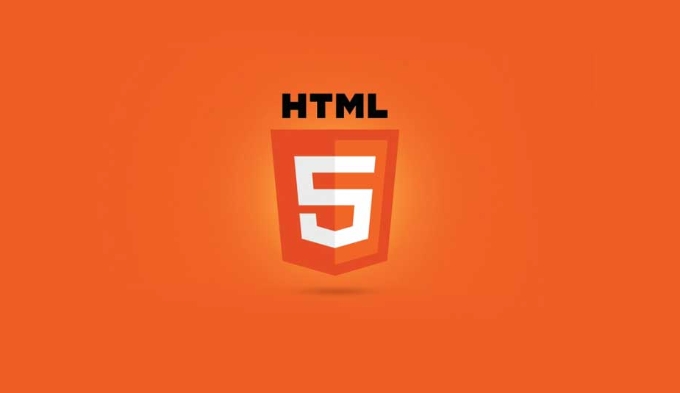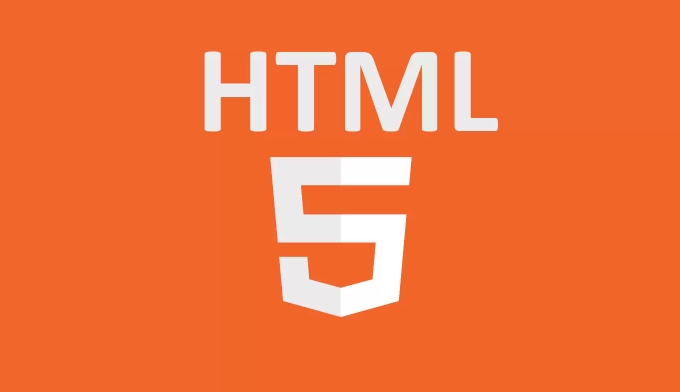The <template> tag is a container in HTML5 for storing lazy content. It is not rendered directly when the page is loaded, but can be dynamically extracted and used through JavaScript. It is suitable for scenes where the same structure needs to be created repeatedly, such as generating lists, cards, or pop-ups. 1. The UI component structure can be predefined to improve component development efficiency; 2. Reduce the amount of code used to splice HTML in JS and enhance maintainability; 3. Improve page performance, because the template does not participate in rendering at the beginning. The steps to use include: define the template structure in HTML, use JavaScript to obtain and clone its contents, and insert the DOM after modification. Notes include: only effective in modern browsers, avoid directly embedding scripts or styles, and it is recommended to add class names or IDs for complex structures for operation.

The HTML <template></template> tag is a container for storing "lazy" content. It will not be rendered directly when the page is loaded, but can be dynamically extracted and used through JavaScript at runtime. This tag is especially suitable for scenarios where the same structure needs to be created repeatedly, such as dynamically generating lists, cards, pop-ups, etc.

What is the <template></template> tag?
Simply put, <template></template> is a "template repository" hidden in HTML. You can write a HTML structure inside, but it will not be displayed on the page and will not affect the rendering performance of the page. This part of the content will only truly "come alive" when you use JavaScript to get the content inside it and insert it into the document.

For example, you can write a template like this:
<template id="user-card">
<div class="card">
<h3>Username</h3>
<p>User Description</p>
</div>
</template>This code will not be displayed on the page unless you take it out and insert it into the DOM with JS.

The actual use of the <template> tag
- Component development : You can pre-defined the structure of the UI component and then copy an insert page when needed.
- Reduce duplicate code : Avoid splicing large amounts of HTML strings in JS to improve maintainability.
- Improve performance : Since the template content will not be rendered at the beginning, there will be no additional re-arrangement or redrawing.
For example: If you want to make a user list page, and each user displays the same way, you can first write the structure of a single user in <template> , and then clone a template content and fill it in each cycle of data.
How to use the <template> tag?
It's very simple to use, the basic steps are as follows:
- Define template structure in HTML
- Get template content with JavaScript
- Clone the template content
- Modify the content and insert it into the page
The sample code is as follows:
const template = document.getElementById('user-card'); const clone = template.content.cloneNode(true); clone.querySelector('h3').textContent = 'Zhang San'; document.body.appendChild(clone);
A few points to note:
-
contentattribute is the core part of the template -
cloneNode(true)is a deep copy, retaining all child nodes - Before inserting, you can operate the cloned content like a normal DOM.
Notes on using <template></template>
- It is only valid in browsers that support HTML5 (and modern browsers support it)
- Don't put scripts or styles directly inside, unless you know exactly how to deal with it
- If the template structure is complex, remember to add class name or ID to the element to facilitate subsequent operations
Basically that's it. Although it seems simple, using <template></template> rationally in actual projects can make the front-end logic clearer and the code cleaner.
The above is the detailed content of What is the HTML template tag?. For more information, please follow other related articles on the PHP Chinese website!

Hot AI Tools

Undress AI Tool
Undress images for free

Undresser.AI Undress
AI-powered app for creating realistic nude photos

AI Clothes Remover
Online AI tool for removing clothes from photos.

Clothoff.io
AI clothes remover

Video Face Swap
Swap faces in any video effortlessly with our completely free AI face swap tool!

Hot Article

Hot Tools

Notepad++7.3.1
Easy-to-use and free code editor

SublimeText3 Chinese version
Chinese version, very easy to use

Zend Studio 13.0.1
Powerful PHP integrated development environment

Dreamweaver CS6
Visual web development tools

SublimeText3 Mac version
God-level code editing software (SublimeText3)

Hot Topics
 Applying Semantic Structure with article, section, and aside in HTML
Jul 05, 2025 am 02:03 AM
Applying Semantic Structure with article, section, and aside in HTML
Jul 05, 2025 am 02:03 AM
The rational use of semantic tags in HTML can improve page structure clarity, accessibility and SEO effects. 1. Used for independent content blocks, such as blog posts or comments, it must be self-contained; 2. Used for classification related content, usually including titles, and is suitable for different modules of the page; 3. Used for auxiliary information related to the main content but not core, such as sidebar recommendations or author profiles. In actual development, labels should be combined and other, avoid excessive nesting, keep the structure simple, and verify the rationality of the structure through developer tools.
 What are the essential HTML elements for structuring a webpage?
Jul 03, 2025 am 02:34 AM
What are the essential HTML elements for structuring a webpage?
Jul 03, 2025 am 02:34 AM
The web page structure needs to be supported by core HTML elements. 1. The overall structure of the page is composed of , , which is the root element, which stores meta information and displays the content; 2. The content organization relies on title (-), paragraph () and block tags (such as ,) to improve organizational structure and SEO; 3. Navigation is implemented through and implemented, commonly used organizations are linked and supplemented with aria-current attribute to enhance accessibility; 4. Form interaction involves , , and , to ensure the complete user input and submission functions. Proper use of these elements can improve page clarity, maintenance and search engine optimization.
 Implementing client-side form validation using HTML attributes.
Jul 03, 2025 am 02:31 AM
Implementing client-side form validation using HTML attributes.
Jul 03, 2025 am 02:31 AM
Client-sideformvalidationcanbedonewithoutJavaScriptbyusingHTMLattributes.1)Userequiredtoenforcemandatoryfields.2)ValidateemailsandURLswithtypeattributeslikeemailorurl,orusepatternwithregexforcustomformats.3)Limitvaluesusingmin,max,minlength,andmaxlen
 How to group options within a select dropdown using html?
Jul 04, 2025 am 03:16 AM
How to group options within a select dropdown using html?
Jul 04, 2025 am 03:16 AM
Use tags in HTML to group options in the drop-down menu. The specific method is to wrap a group of elements and define the group name through the label attribute, such as: 1. Contains options such as apples, bananas, oranges, etc.; 2. Contains options such as carrots, broccoli, etc.; 3. Each is an independent group, and the options within the group are automatically indented. Notes include: ① No nesting is supported; ② The entire group can be disabled through the disabled attribute; ③ The style is restricted and needs to be beautified in combination with CSS or third-party libraries; plug-ins such as Select2 can be used to enhance functions.
 Implementing Clickable Buttons Using the HTML button Element
Jul 07, 2025 am 02:31 AM
Implementing Clickable Buttons Using the HTML button Element
Jul 07, 2025 am 02:31 AM
To use HTML button elements to achieve clickable buttons, you must first master its basic usage and common precautions. 1. Create buttons with tags and define behaviors through type attributes (such as button, submit, reset), which is submitted by default; 2. Add interactive functions through JavaScript, which can be written inline or bind event listeners through ID to improve maintenance; 3. Use CSS to customize styles, including background color, border, rounded corners and hover/active status effects to enhance user experience; 4. Pay attention to common problems: make sure that the disabled attribute is not enabled, JS events are correctly bound, layout occlusion, and use the help of developer tools to troubleshoot exceptions. Master this
 Configuring Document Metadata Within the HTML head Element
Jul 09, 2025 am 02:30 AM
Configuring Document Metadata Within the HTML head Element
Jul 09, 2025 am 02:30 AM
Metadata in HTMLhead is crucial for SEO, social sharing, and browser behavior. 1. Set the page title and description, use and keep it concise and unique; 2. Add OpenGraph and Twitter card information to optimize social sharing effects, pay attention to the image size and use debugging tools to test; 3. Define the character set and viewport settings to ensure multi-language support is adapted to the mobile terminal; 4. Optional tags such as author copyright, robots control and canonical prevent duplicate content should also be configured reasonably.
 Debugging common HTML validation errors.
Jul 03, 2025 am 02:41 AM
Debugging common HTML validation errors.
Jul 03, 2025 am 02:41 AM
When encountering HTML verification errors, you must first clarify the problem and correct it according to the specifications. 1. When the required attributes are missing, the src and alt and a href of img should be completed; 2. When the tag nesting is incorrect, the structure should be clarified and the tags should be closed correctly to avoid confusion in nesting block-level elements; 3. When using invalid or discarded tags, you should refer to the MDN document to replace it with modern writing methods, such as replacing center and font with CSS; 4. When character encoding problems, add metacharset="UTF-8" and ensure that the file is saved in UTF-8 format to solve it.
 How to associate captions with images or media using the html figure and figcaption elements?
Jul 07, 2025 am 02:30 AM
How to associate captions with images or media using the html figure and figcaption elements?
Jul 07, 2025 am 02:30 AM
Using HTML sums allows for intuitive and semantic clarity to add caption text to images or media. 1. Used to wrap independent media content, such as pictures, videos or code blocks; 2. It is placed as its explanatory text, and can be located above or below the media; 3. They not only improve the clarity of the page structure, but also enhance accessibility and SEO effect; 4. When using it, you should pay attention to avoid abuse, and apply to content that needs to be emphasized and accompanied by description, rather than ordinary decorative pictures; 5. The alt attribute that cannot be ignored, which is different from figcaption; 6. The figcaption is flexible and can be placed at the top or bottom of the figure as needed. Using these two tags correctly helps to build semantic and easy to understand web content.






